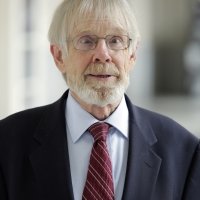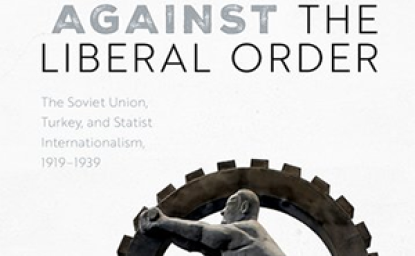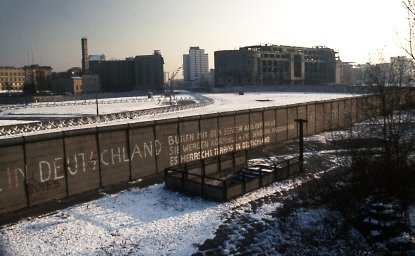This article was originally published in the Hoover Digest (2016 No. 4)
This year marks the 60th anniversary of the Hungarian Revolution, the most violent of several upheavals in Soviet-dominated Central and Eastern Europe during 1956 that shattered Communists’ unwavering belief in Josef Stalin while demonstrating Moscow’s continued resolve to use military force to maintain control of Eastern Europe.
A year earlier, Soviet leader Khrushchev had reconciled with Yugoslavia’s Tito, legitimizing national communism independent of the USSR. Signing the Austrian State Treaty in May, Moscow liquidated its occupation zone and withdrew all military forces from the country by November. In February 1956 Khrushchev denounced Stalin in a “secret speech” that quickly became public and sent shock waves throughout the Communist world. In June Polish workers revolted in Poznan. In October banished Polish Communist leader Gomulka resumed command of the Communist Party, defusing a threat of Soviet military intervention while sanctioning limited liberal reforms.
While political power in Poland remained in the hands of the Communist Party, in Hungary protest turned into revolution on October 23 when the secret police fired on unarmed demonstrators. Contingents of the Soviet army intervened, but as Marshal Zhukov later admitted, incurred heavy losses at the hands of the revolutionaries and temporarily withdrew. For a week the revolution seemed to succeed, but when the new government proclaimed an end to Communist Party rule and withdrawal from the Warsaw Pact, Moscow crushed the uprising with overwhelming military force. It installed a new Hungarian Communist leadership under Janos Kadar that imprisoned hundreds and executed leaders of the revolution, including Prime Minister Imre Nagy and defense minister Pal Maleter. Two hundred thousand Hungarians fled their homeland. People around the world demonstrated solidarity with the Hungarian revolutionaries, but the U.S and other Western governments were deterred from intervention by the reality of a nuclear Soviet Union with local military control (and the distraction of the simultaneous British/French/Israeli military intervention in Egypt). These events of 1956 would shape Soviet and American policy toward Eastern Europe, and developments within that region, for the next three decades of the Cold War.
The “Brezhnev Doctrine” from Khrushchev to Andropov
Moscow’s acceptance of Austrian neutrality and withdrawal of its army fueled hopes that Hungary might follow the same path. That turned out to be wishful thinking, as the Soviet Union crushed the Hungarian Revolution. The relevant precedent was not Austria, where Communist rule had never been established and there were no “gains of socialism” to be defended against revolutionaries. The precedent was East Germany in 1953, when Moscow utilized massive military force to suppress a revolt that began as a protest over harsher workplace conditions in East Berlin but quickly spread to a week-long GDR-wide revolt for freedom involving some half-million people in nearly 600 localities.[1]
Outbreak of the Hungarian Revolution found the Soviet leadership preoccupied with unrest in Poland and initially unable to restore Communist Party rule. Khrushchev temporized and after consulting East European Communist leaders issued on October 30 a proclamation “On Friendship and Cooperation between the Soviet Union and other Socialist States” that promised respect for the sovereignty of individual Communist states and more equitable relations among them . But the very next day, confronted with the liquidation of Communist rule in Hungary, Khrushchev ordered the Soviet military crackdown. In intervening militarily to avert “counterrevolution,” Khrushchev in effect promulgated the “Brezhnev Doctrine” twelve years before Brezhnev articulated the doctrine in 1968 with regard to Czechoslovakia. The same policy would surely have been followed under Brezhnev and his successor Andropov in Poland in 1982, had internal martial law failed to suppress an increasingly radicalized Solidarity. 1956 witnessed the most violent manifestation of an abiding principle of Soviet Cold War policy: Moscow would use its armed forces to maintain Communist rule in Eastern Europe, a policy reversed only in 1989 by Gorbachev.
Myth of Liberation
Suppression of the Hungarian Revolution by the Soviet Union in 1956 was not the definitive turning point in Western and especially American Cold War policy toward Eastern Europe, forcing the West to abandon initiatives aimed at liberating the region from Soviet control. The real turning point in American policy was 1953. The East German uprising and mass protests in Czechoslovakia and Bulgaria spawned discussion in Washington of more interventionist “liberation” policies. But by the end of that year the Eisenhower Administration that had assumed office amidst electoral campaign rhetoric of “liberation” concluded in National Security Council Report No. 174 (December 1953) that only an unacceptable war could end Soviet control of Eastern Europe. This conclusion was reinforced by the failure of the Truman Administration’s efforts at covert subversion, which had turned out to be either insignificant or compromised by efficient Communist security forces.
U.S. policy was formally defined in NSC Directive 5505/1 (January 1955) as promoting evolutionary reform within the Soviet European space rather than liberation as revolutionary change. This policy reflected the conclusions of some twenty U.S. government studies of the Soviet orbit conducted during both Truman and Eisenhower administrations that concluded that Soviet control of Eastern Europe was a fact of life, that the United States could at best try to prevent total Sovietization and keep a spirit of resistance alive, but that “liberation” (meaning an end to Soviet control and Communist rule) was a long-term aspiration.
The theme of liberation was revived in the 1956 U.S. Presidential electoral campaign, but it was only rhetoric, as Bennet Kovrig demonstrated in his book, The Myth of Liberation.[2] Carefully tracking ferment in the Soviet bloc in the wake of Khrushchev’s “Secret Speech,” Eisenhower Administration officials defined U.S. policy toward Eastern Europe in NSC studies and directives in mid-1956 as encouraging not liberation but evolutionary change. Some NSC principals including Vice President Nixon spoke in internal discussions of welcoming even unsuccessful violent protests in Eastern Europe, but their views were downplayed in NSC directives and had no discernible effect in practice. No “behind the lines’ operations were organized. No exile armies were dispatched. No appeals for insurrection were issued. Radio programs – including RFE Hungarian broadcasts – through the fall 1956 were cautionary and emphasized, in the words of RFE Policy Advisor William Griffith, promoting liberalization even under conditions of Communist rule.
Soviet suppression of the Hungarian Revolution put U.S. policy -- lacking power to promote liberation and lacking instruments to promote evolutionary change -- on hold for the next decade. The principal means available to the United States for engaging East Europeans during those years was radio broadcasts. As a diplomat in the American Embassy in Prague reported to Washington in 1964, the only U.S. influence on domestic Czechoslovak developments was RFE. A new policy vision would appear in the 1960s, as Zbigniew Brzezinski proposed “peaceful engagement” in Eastern Europe to promote more ties with the West and induce gradual internal liberalization. [3] That vision led to expanded economic ties, cultural exchange, two-way travel, the covert “book program” that provided Western printed materials to East Europeans, expansion of Western radio broadcasts, and a visitors program that brought regime officials such as Hungarian Communist leader Imre Pozsgay and non-regime personalities such as Polish lay Catholic editor Jerzy Turowicz to the United States. “Peaceful engagement” was accepted or at least tolerated by East European Communist regimes firmly in power but aware of their limitations in the in the aftermath of the Hungarian Revolution and ready to expand ties with the West.
Accommodation
Within Eastern Europe, oscillations of Soviet policy after Stalin’s death induced challenges to Stalinist orthodoxy and gave rise to demands for reform – some minor but many radical. The June 1956 Poznan demonstrators quickly escalated their demands from “bread” to “freedom.” In Hungary, the Petofi Circle discussed minor reforms of the Communist system, but demonstrators in Gyor a week before the outbreak of the Revolution called for a multiparty system and free press.
Crushing of the Hungarian Revolution meant that Communist party rule and Soviet hegemony were inevitable facts of life for East Europeans for the foreseeable future. What followed was accommodation. Populations were aware of the futility of revolt, while regimes sought to avoid internal crises. Within those constraints, minor reforms were necessary and possible. Hungarian leader Kadar proclaimed in 1961 that “whoever is not against us is with us” and introduced a “New Economic Model,” popularly known as “goulash communism,” that involved expanded economic ties with the West and minor market-oriented reforms. In Poland Gomulka tolerated private agriculture, an active Catholic Church, and widespread travel to the West. Bulgaria permitted more cultural freedom. Poland, Hungary, and Romania ended jamming of Western radio broadcasts. Soviet suppression of the Hungarian Revolution thus spawned revisionism – meaning some personal, intellectual, and economic relaxation without significant political change. Revisionism in this sense prevailed until Soviet military suppression of the “Prague Spring” in 1968 demonstrated that the USSR could no more tolerate gradual peaceful reforms in Czechoslovakia than the violent East German uprising or the Hungarian Revolution.
1968 discredited the notion of in-system reform and led to peaceful protest on non-Marxist and non-Communist grounds, first by individuals like Vaclav Havel and then by groups and organizations – the Committee for the Defense of Workers and Solidarity in Poland, and in the 1980s civic forums in Czechoslovakia and the GDR, Fidesz in Hungary. This emerging civil society -- the “little people” as Timothy Garton Ash called them[4] -- would in 1989 shatter East European Communist systems that had become increasingly brittle as the result of minor reforms and exposure to the West and whose leaders -- “a political class in a system that was largely bereft of corrective mechanisms” (Stephen Koktin) [5] -- could no longer count on Moscow under Gorbachev to save them.
The events of 1956 made clear to all that – as RFE Polish Service director Jan Nowak Jezioranski told his listeners on November 9 – “Poland remains in the Soviet embrace… Russia with its enormous military might is near, and the United States is too far away…” That geopolitical reality condemned East European rulers and ruled alike to three decades of accommodation as they tried to reform an unreformable system. The consequence was what George Kennan had foreseen in 1947: containment would sharpen internal contradictions of the Soviet system that would eventually lead in 1989 not to its evolution but to its collapse and the end of the Cold War.
[1] Christian F. Ostermann, ed. Uprising in East Germany 1953 (Budapest and New York: CEU Press, 2001).
[2] Johns Hopkins University Press, 1973
[3] Zbigniew Brzezinski. Alternative to Partition. For a Broader Conception of America’s Role in Europe. London: McGraw Hill, 1965.
[4] (New York Review of Books, November 5, 2009)
[5] Uncivil Society: 1989 and the Implosion of the Communist Establishment New York: Modern Library, 2009.







